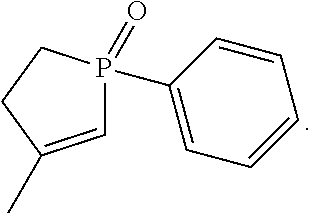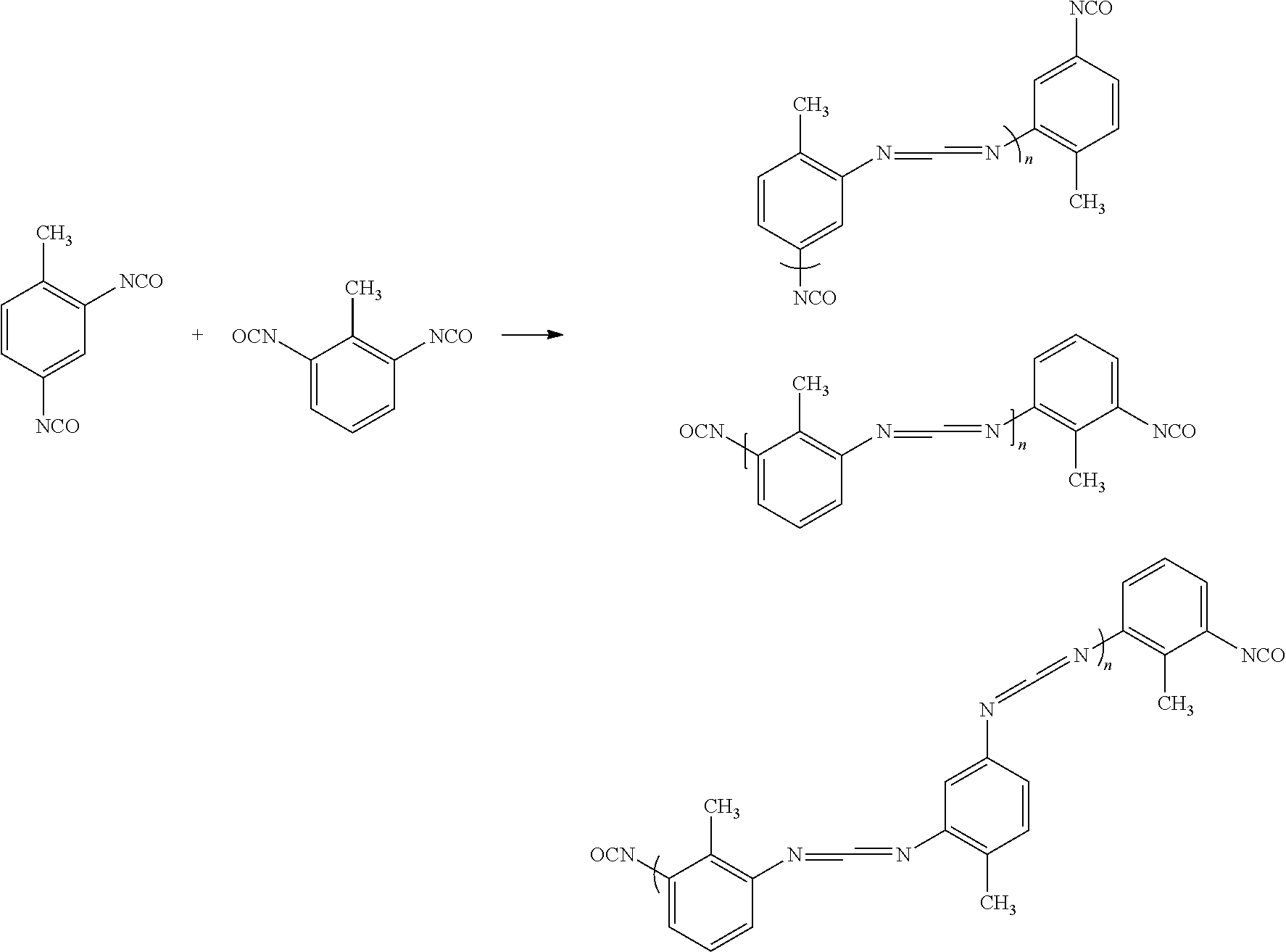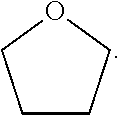High Molecular Weight Polycarbodiimide And Method Of Producing Same
- Summary
- Abstract
- Description
- Claims
- Application Information
AI Technical Summary
Benefits of technology
Problems solved by technology
Method used
Image
Examples
example 1
[0072]64.8 grams of Isocyanate Component 1, 0.144 grams of the Carbodiimidization Catalyst and 550 mL of the First Solvent 1 are disposed in a three neck round bottom flask equipped with a magnetic stirrer and a condenser to form a mixture. The mixture is heated to about 110° C., i.e., the boiling point temperature of the First Solvent 1, in 15-20 minutes under a static nitrogen atmosphere. The mixture is held at 110° C. under a static nitrogen atmosphere for about four hours, during which carbon dioxide (CO2) is released from the mixture. The mixture is initially a clear yellow liquid, but the mixture becomes turbid after about four hours while being held at about 110° C. under a static nitrogen atmosphere. The mixture becomes more turbid with time, i.e., the mixtures becomes more turbid between the third and fourth hour during which the mixture is held at about 110° C. under a static nitrogen atmosphere. After about four hours, at least one carbodiimide compound is formed in the m...
example 2
[0073]64.8 grams of Isocyanate Component 1, 0.144 grams of the Carbodiimidization Catalyst and 550 mL of the First Solvent 2 are disposed in a three neck round bottom flask equipped with a magnetic stirrer and a condenser to form a mixture. The mixture is heated to about 66° C., i.e., the boiling point temperature of the First Solvent 2, in 15-20 minutes under a static nitrogen atmosphere. The mixture is held at 66° C. under a static nitrogen atmosphere for about four hours, during which carbon dioxide (CO2) is released from the mixture. The mixture is initially a clear yellow liquid, but the mixture becomes turbid after about four hours while being held at about 66° C. under a static nitrogen atmosphere. The mixture becomes more turbid with time, i.e., the mixtures becomes more turbid between the third and fourth hour during which the mixture is held at about 66° C. under a static nitrogen atmosphere. After about four hours, at least one carbodiimide compound is formed in the mixtu...
example 3
[0074]64.8 grams of Isocyanate Component 1, 0.144 grams of the Carbodiimidization Catalyst and 550 mL of the First Solvent 1 are disposed in a three neck round bottom flask equipped with a magnetic stirrer and a condenser to form a mixture. The mixture is heated to about 110° C., i.e., the boiling point temperature of the First Solvent 1, in 15-20 minutes under a static nitrogen atmosphere. The mixture is held at 110° C. under a static nitrogen atmosphere for about four hours, during which carbon dioxide (CO2) is released from the mixture. The mixture is initially a clear yellow liquid, but the mixture becomes turbid after about four hours while being held at about 110° C. under a static nitrogen atmosphere. The mixture becomes more turbid with time, i.e., the mixtures becomes more turbid between the third and fourth hour during which the mixture is held at about 110° C. under a static nitrogen atmosphere. After about four hours, at least one carbodiimide compound is formed in the m...
PUM
| Property | Measurement | Unit |
|---|---|---|
| Temperature | aaaaa | aaaaa |
| Temperature | aaaaa | aaaaa |
| Temperature | aaaaa | aaaaa |
Abstract
Description
Claims
Application Information
 Login to View More
Login to View More - R&D
- Intellectual Property
- Life Sciences
- Materials
- Tech Scout
- Unparalleled Data Quality
- Higher Quality Content
- 60% Fewer Hallucinations
Browse by: Latest US Patents, China's latest patents, Technical Efficacy Thesaurus, Application Domain, Technology Topic, Popular Technical Reports.
© 2025 PatSnap. All rights reserved.Legal|Privacy policy|Modern Slavery Act Transparency Statement|Sitemap|About US| Contact US: help@patsnap.com



